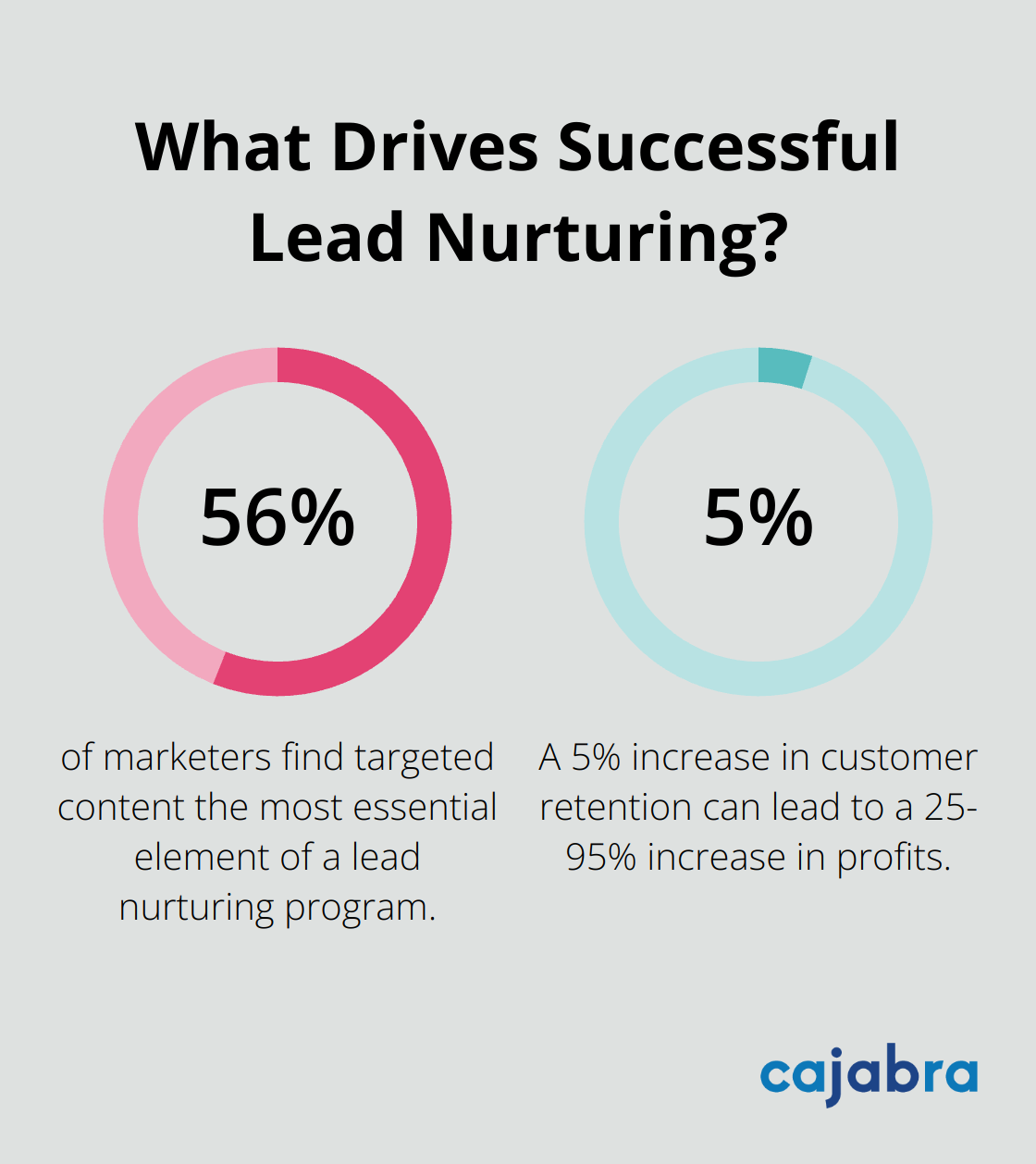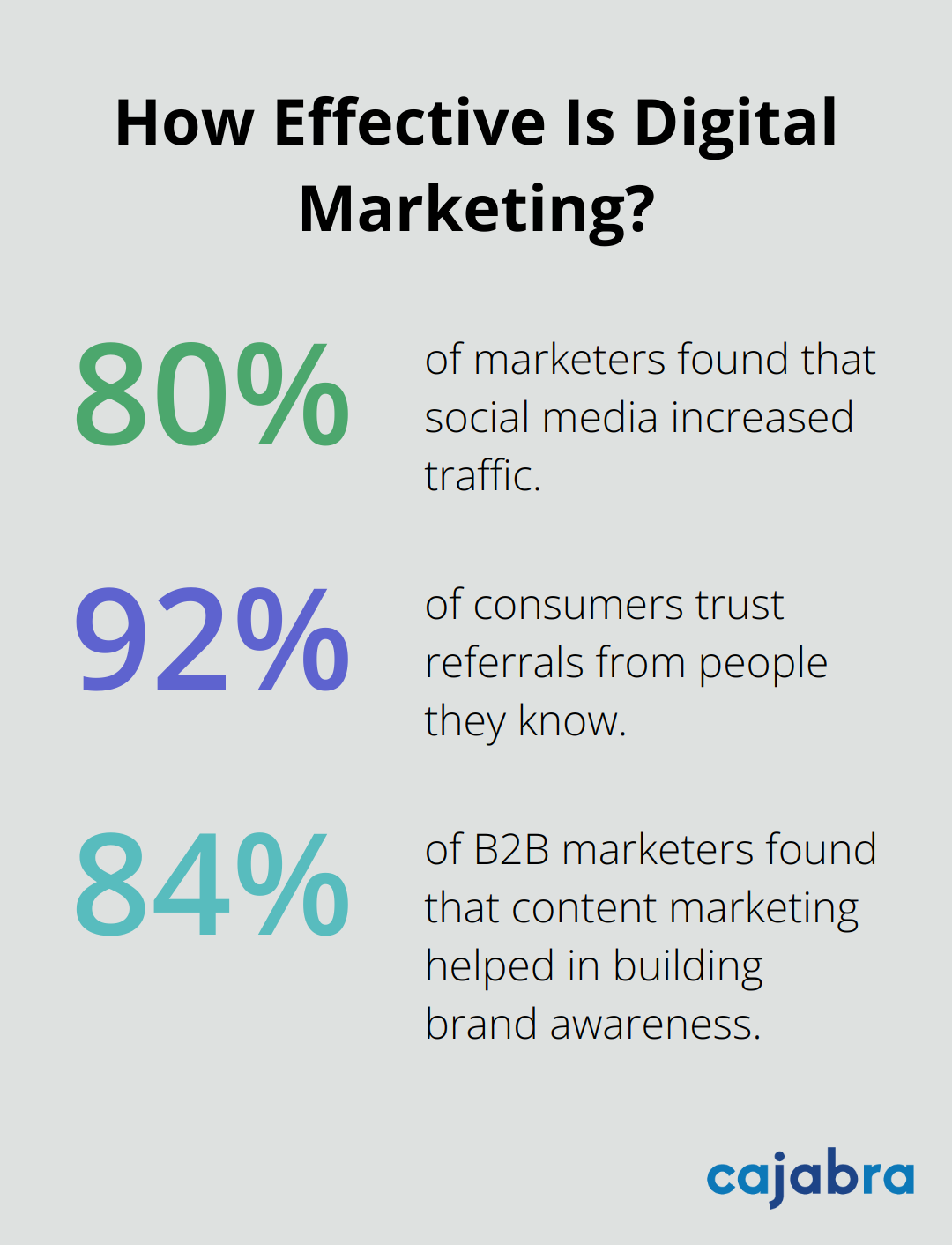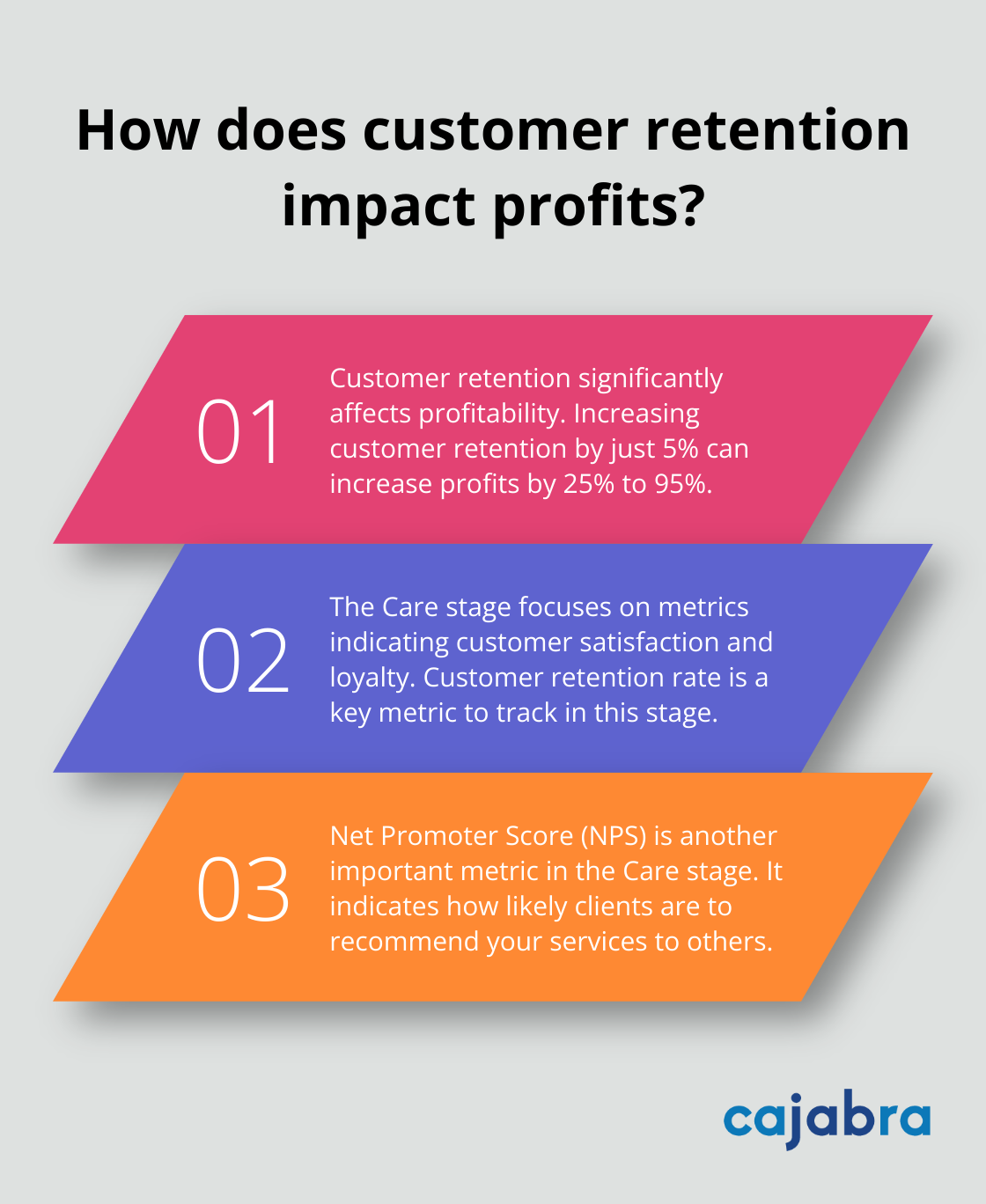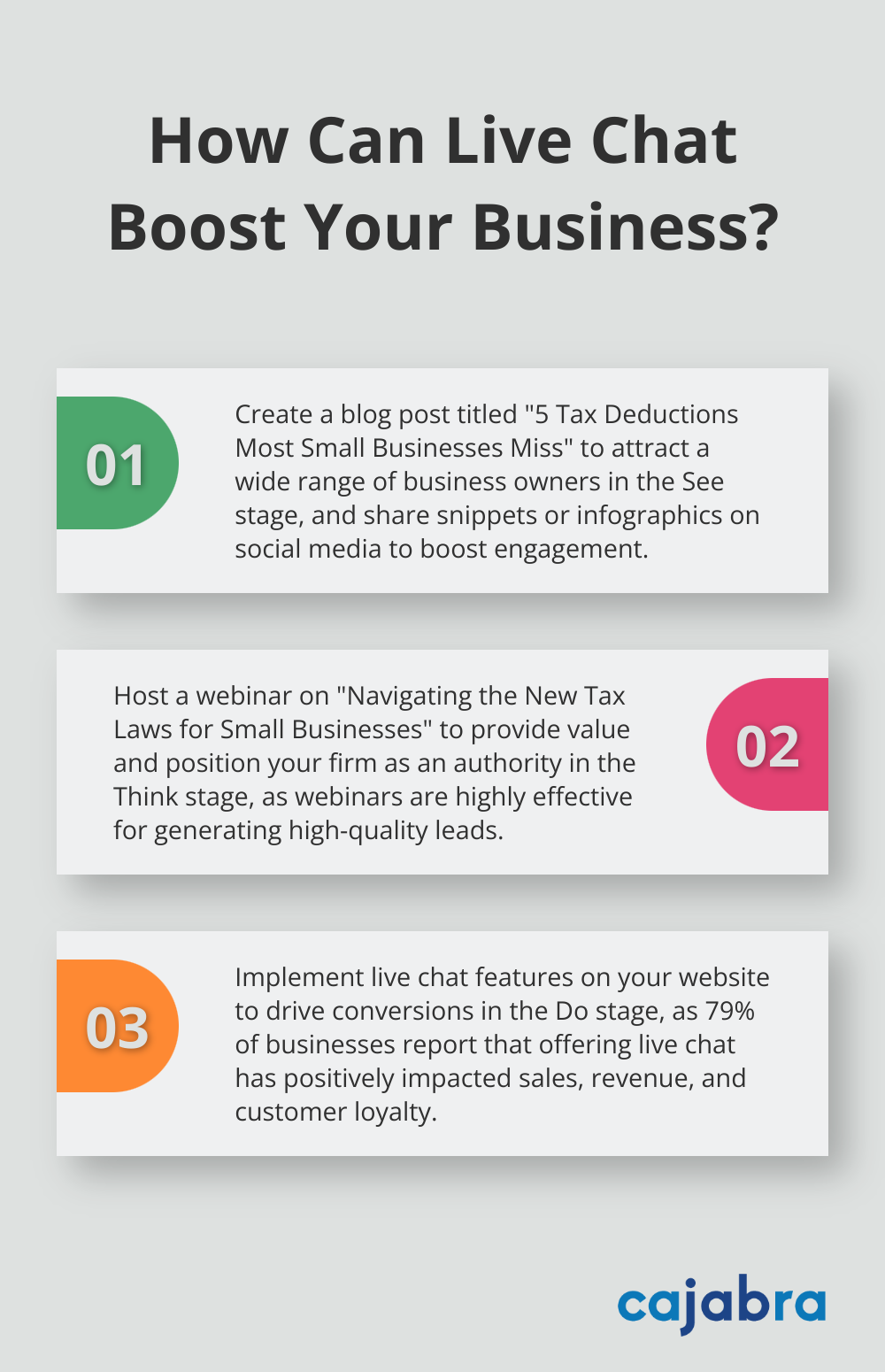
At Cajabra, LLC, we're excited to explore the See-Think-Do-Care content marketing framework. This powerful approach revolutionizes how businesses connect with their audience across different stages of the customer journey.
The See-Think-Do-Care framework offers a fresh perspective on content creation, moving beyond traditional marketing funnels. We'll break down each stage and show you how to implement this strategy for maximum impact.
The See-Think-Do-Care (STDC) framework, introduced by digital marketing expert Avinash Kaushik in 2013, revolutionizes content marketing. This customer-centric approach aligns marketing efforts with distinct stages of a customer's journey, from initial awareness to long-term loyalty.
Each stage demands a unique content strategy to engage the audience effectively. For instance, the See stage often employs broad, informative content to capture attention, while the Think stage provides more detailed information about specific solutions (such as how a particular service can benefit potential clients).
The STDC framework significantly departs from traditional marketing funnels. While traditional funnels primarily focus on conversion, STDC emphasizes the importance of engaging customers at every stage of their journey.

A study highlights the value of this approach: 56% of marketers find targeted content the most essential element of a lead nurturing program. This underscores the importance of the Think stage in the STDC framework, where lead nurturing takes center stage.
Moreover, the Care stage (often overlooked in traditional funnels) proves critical for business growth. Research by Bain & Company reveals that a mere 5% increase in customer retention can lead to a 25-95% increase in profits.
To implement STDC effectively, content must be tailored to each stage. For example:
The STDC framework empowers businesses to create a more cohesive and effective marketing strategy. As we move forward, we'll explore how to implement this framework in detail, starting with strategies for the See stage.
The See stage requires a broad approach to attract potential customers. 84% of B2B marketers found that content marketing helped in building brand awareness.

We identify the widest possible audience. For accounting firms, this includes all businesses that need financial services. We create content that addresses common pain points. A blog post titled "5 Tax Deductions Most Small Businesses Miss" can attract a wide range of business owners.
Social media amplifies reach. Sprout Social states that 80% of marketers found that social media increased traffic. We share snippets of blog posts or create infographics summarizing key points to boost engagement.
In the Think stage, prospects actively research solutions.
We develop in-depth content that showcases expertise. Case studies prove particularly effective here. For instance, a case study titled "How We Helped a Local Restaurant Save $50,000 in Taxes" demonstrates tangible results.
Webinars serve as another powerful tool. GoToWebinar reports that 73% of B2B marketers and sales leaders say webinars are the best way to generate high-quality leads. We host webinars on topics like "Navigating the New Tax Laws for Small Businesses" to provide value and position firms as authorities.
The Do stage focuses on prospects ready to make a decision. We make it easy for them to choose. Unbounce reports that using videos on landing pages can increase conversions by 86%.
We create dedicated landing pages for each core service. These pages include clear calls-to-action (CTAs) and highlight unique value propositions. For example, Cajabra's JAB System™ promises to move accountants from overlooked to overbooked in just 90 days - a compelling offer for firms looking to grow.
We implement live chat features on websites. A Kayako study found that 79% of businesses say offering live chat has had a positive effect on sales, revenue, and customer loyalty.
The Care stage turns clients into advocates. Bain & Company reports that increasing customer retention rates by 5% increases profits by 25% to 95%.
We implement client feedback systems. Regular surveys help identify areas for improvement and show clients their input matters. We use Net Promoter Score (NPS) to measure client satisfaction and loyalty.
We create exclusive content for existing clients. A monthly newsletter with insider tips on tax planning or financial management adds value beyond core services and keeps firms top-of-mind.
We consider implementing referral programs. Nielsen reports that 92% of consumers trust referrals from people they know. We offer incentives for clients who refer new business to firms.
The systematic application of the STDC framework creates a comprehensive marketing strategy that guides prospects from initial awareness to loyal advocacy. The key lies in tailoring the approach to each stage, providing the right content at the right time to move prospects through their journey. In the next section, we'll explore how to measure success at each stage of the STDC framework.
The See stage requires focus on metrics that indicate reach and engagement. Track website traffic, particularly new visitors, as this shows how many potential customers you attract.

Monitor social media reach and engagement rates. Try to surpass industry benchmarks by creating compelling, shareable content that resonates with your target audience.
Track branded search volume using tools like Google Search Console. An increase in branded searches indicates growing awareness of your firm. Also, measure share of voice - how often your brand is mentioned compared to competitors in your industry.
As prospects move into the Think stage, focus on metrics that show deeper engagement. Measure time on site and pages per session.
Track content downloads, webinar registrations, and newsletter sign-ups. These actions indicate that prospects actively consider your services.
Monitor blog post comments and social media interactions. These engagement metrics show that your content resonates with your audience and encourages them to consider your services further.
In the Do stage, focus on conversion metrics. Track your overall conversion rate - the percentage of visitors who take a desired action.
Measure form submissions, consultation requests, and direct inquiries. These clearly indicate that prospects are ready to engage your services. Also, track your cost per lead and customer acquisition cost to ensure your marketing efforts remain cost-effective.
Monitor your sales cycle length. If your cycle is significantly longer than industry averages, it may indicate issues in your conversion process that need addressing.
The Care stage focuses on metrics that indicate customer satisfaction and loyalty. Track your customer retention rate. Increasing customer retention by just 5% can increase profits by 25% to 95%.
Measure your Net Promoter Score (NPS). This metric indicates how likely your clients are to recommend your services.
Monitor client lifetime value and upsell/cross-sell rates. These metrics show how effectively you nurture and grow your client relationships.
Consistent tracking of these metrics across all stages of the See-Think-Do-Care framework will provide valuable insights into the effectiveness of your content marketing strategy. This data-driven approach allows for continuous optimization, ensuring your marketing efforts drive real business results.
The See-Think-Do-Care framework transforms content marketing by aligning strategies with customer journey stages. This approach empowers businesses to create targeted, effective content that resonates with audiences from initial awareness to long-term loyalty. Successful implementation requires a deep understanding of your target audience and their needs at each stage.

Consistency plays a vital role when applying the See-Think-Do-Care content marketing framework. Regular analysis of metrics gauges the effectiveness of your content and enables data-driven adjustments. As technology advances, we expect more personalized content delivery and improved targeting capabilities, which will enhance the effectiveness of content strategies.
At Cajabra, we've witnessed how the See-Think-Do-Care approach can revolutionize accounting firms' marketing efforts. Our JAB System™ leverages this framework to help accountants attract, nurture, and retain high-value clients. The See-Think-Do-Care framework provides a solid foundation for creating customer-centric content strategies in an increasingly competitive market.



